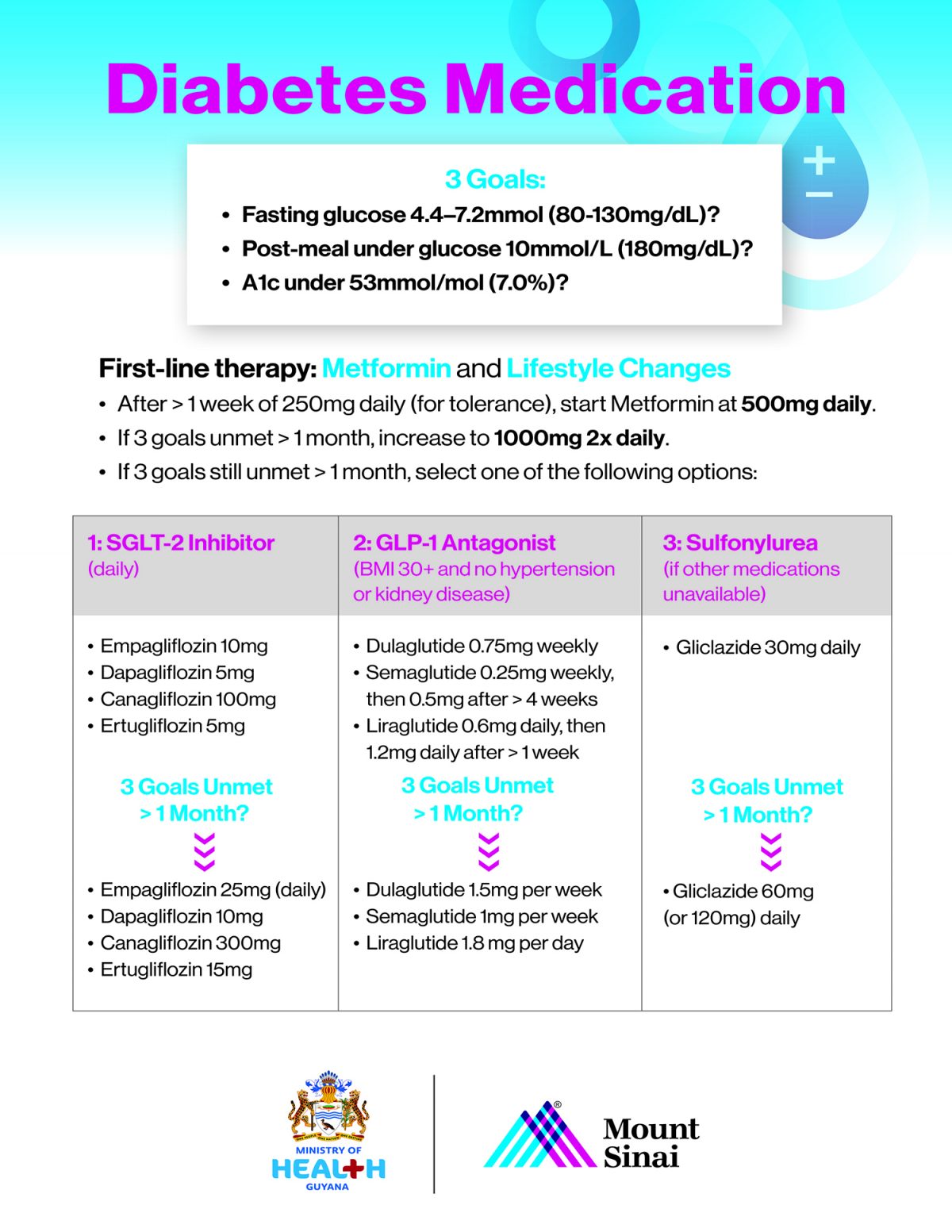By Deneita Fredericks
As part of an initiative to enhance diabetes care and reduce the mortality rate in Guyana, the Ministry of Health has partnered with Mount Sinai Health System to distribute machines that will reveal blood sugar levels over months and new treatment guidelines have also been introduced.
Initially, one machine has been assigned to each region and training will be undertaken.
Diabetes, often referred to as a silent epidemic, is a chronic health condition that affects how the body turns food into energy.
The launch was held yesterday at the Pegasus Savannah Suite and saw Minister of Health Dr Frank Anthony, representatives from the New York-based Mount Sinai as well as medical personnel from all ten regions in attendance. The initiative targets providing better care for the growing number of diabetes patients in the country.
Guyana has been grappling with an increasing prevalence of diabetes, which has placed a substantial burden on the healthcare system. According to a report by the World Diabetes Foundation, the citizens of Guyana are severely impacted by type 2 diabetes, partly as a consequence of national ethnic diversity with Indo-Guyanese (43%), Afro-Guyanese (30%) and Amerindian (9%). However, while there have been no formal prevalence studies, the Diabetes Atlas 6th ed. estimates that 14% of the adult population of 427,000 is afflicted. This is the highest prevalence in South America and was expected to rise to 17.9% by 2030. Currently, over 330 individuals are undergoing dialysis treatment due to complications arising from unmanaged diabetes.
In July, Stabroek News reported that diabetes cases in the country were pegged at a staggering 60,000 plus. Anthony said then that the 60,000-plus estimate was taken from the International Diabetes Federation, a non-profit umbrella organisation of more than 240 national diabetes associations in 161 countries and territories.
Anthony yesterday highlighted the importance of taking a step towards providing an advanced approach to the management of diabetes amongst Guyanese.
“Diabetes is something we have been confronting for many years. This is one of the diseases associated with lifestyle choices and because of Guyanese lifestyles the disease seems to be more prevalent.”
Moreover, he highlighted the challenge of inadequate statistical data collection in the country. “One of the challenges we face is that we don’t collect statistics like we should. There is no system in place to tally statistics, and this needs to be worked on”, he stated.
To address this issue, the Ministry plans to work on establishing systems that will not only track the prevalence and incidence of diabetes but also monitor treatment outcomes, identify trends, and evaluate the impact of various interventions. This data-driven approach is essential for guiding healthcare policies and ensuring that resources are directed where they are most needed, he said.
The cornerstone of this partnership is the provision of HBA1C machines, essential tools for monitoring long-term blood glucose control in diabetic patients. These machines provide a precise measurement of average blood glucose levels over the past two to three months, giving healthcare providers a more accurate picture of a patient’s overall diabetic control. This data allows for timely adjustments to treatment plans, reducing the risk of complications and improving patients’ quality of life. Machines will be distributed to medical facilities in each of the ten regions of Guyana, allowing for more accessible and accurate monitoring of diabetes management.
Additionally, training will be provided to medical personnel across these regions. Several healthcare professionals have been selected to receive specialized training on the operation and interpretation of HBA1C machines as well as guidelines introduction and diabetes screening.
Moreover, the training model will create a network of expertise throughout the country. Medical professionals trained at centralized facilities can return to their communities, where they serve as local resources for their colleagues.
“When we train persons, we do not want it to be in one place, but upscale across the entire country. Each health centre should be capable of managing chronic diseases as it is not just about increasing life expectancy but also about health planning”, he said.






